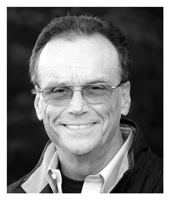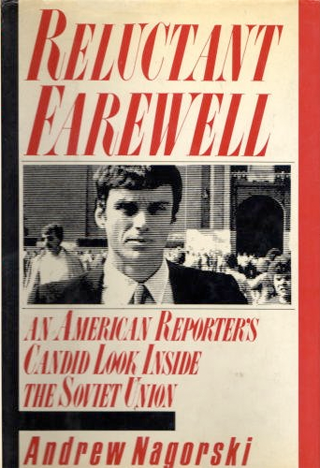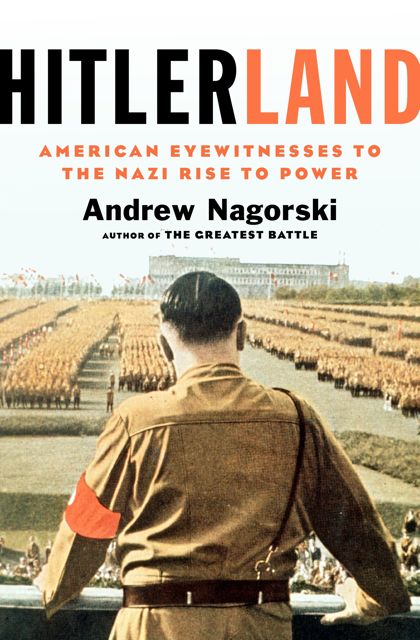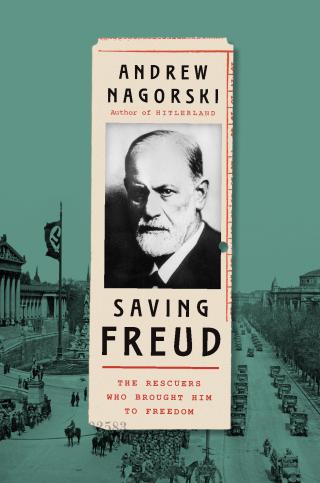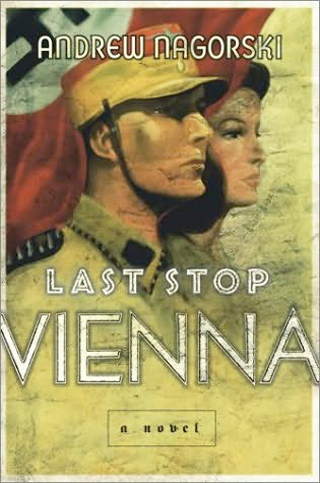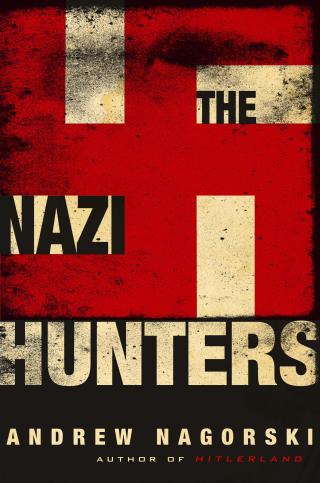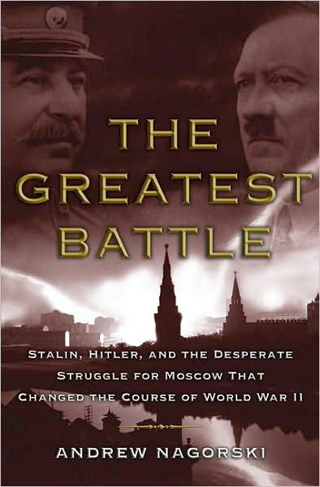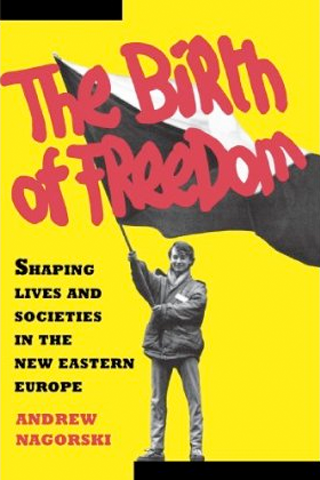Puzzles and enigmas in the life of psychology’s founder
How should we approach writing about the life of Sigmund Freud? For Freud every individual life is haunted by impulses, motives and desires unknown even to the person who lives it; his intricate cartography of the psyche makes it difficult to reduce a person’s existence to an external chronology of actions and events.
His biography becomes even more difficult in relation to particular areas of his thought. In an essay on Paul Cézanne from 1945 the philosopher Maurice Merleau-Ponty argued that, as the inheritor of a nineteenth-century positivism that made verifiability the basic criterion for valid knowledge Freud misstated the basis of his own theory, imagining that he was tracing “necessary relations of cause and effect” between life and work.
It is not far from this conceptualization to the reductivism that sees, say, a painting as an unconscious effect of repressed childhood wishes. But unlike the natural sciences, argues Merleau-Ponty, psychoanalysis wasn’t meant to nail a cause to an effect, “but to point to motivational relationships which are in principle simply possible”. Applying Freud’s principle of Nachträglichkeit– literally “Afterwardness” – the meaning of a life comes into being retrospectively, such that the future can, in a sense, give birth to the past. Or, as Merleau-Ponty’s elegant formulation has it, “this work to be done called for this life”. In other words a body of work isn’t accounted for by the life that produced it; rather, a life comes into focus in the backward light of the work to which it gave rise. What was it about Freud’s work, we need to ask, that called for his life?
Of the three forays into Freud’s life under consideration here, it is striking that only the concise primer, Matt Ffytche’s excellent contribution to Reaktion’s Critical Lives series, explicitly recognizes and does justice to this question. In his opening chapter Ffytche presents a kind of historical diptych, the first panel of which is an authoritative but conventional overview of the political and intellectual forces that shaped Freud’s early life. We learn that Sigismund Schlomo Freud was born in Freiberg (now Příbor), Moravia in 1856, to Jacob, a modestly successful Jewish merchant, and his young (third) wife, Amalia. Sigismund was born a half-brother to Jacob’s two adult children by his first wife. A younger brother, born a year and a half later, died at eight months. Jacob moved the family to Vienna in 1860, a decision that would afford his young son the dazzling educational opportunities and intellectual milieu that would shape the life and work to come. Ffytche sets Freud’s life in the context of the liberalization of the Habsburg empire and the consequent ferment of the diametric forces of Enlightenment progressivism and antisemitism, twin poles in the formation of Freud’s Jewish identity.
The second panel in Ffytche’s diptych puts this kind of summative biography in question, pointing to all that it leaves out of the picture, notably the “abundance of unconscious trains of thought” that “radiates secretly outwards from certain childhood experiences, and therefore consigns us to not really knowing who we are, or the reasons why we act”. Ffytche cites Freud’s dream of sorrow at a fountain and his association to the Biblical psalm of Jewish exile, “By the waters of Babylon”; the external facts of his life, such as his experience of antisemitic prejudice, cannot be tidily marked off from his unconscious dream life.
Freud places the most basic premiss of biography, that a life begins at birth and unfolds in a straight chronological line, under suspicion. Psychoanalysis has a distinctly non-linear conception of time in which infancy and childhood persist in the adult: “in the Freudian life”, writes Ffytche, “one only apparently leaves childhood behind”.
Ffytche deals with this challenge by maintaining a broadly chronological perspective while organizing the chapters thematically under titles such as “Histories”, “Memories” and “Dreams”, allowing readers to see the persistent anticipations and recurrences in the movement between earlier and later stages of Freud’s life. This approach helps us to understand key psychoanalytic terms – sexuality, memory, anxiety, the unconscious – as ideas in perpetual formation rather than fixed conceptual entities. Ffytche’s supple book, concise yet capacious, attests to the complexity of the task of reading the life in the light of the work; this may explain why, for all their differences of focus, tone and approach, the one feature shared by Andrew Nagorski’s Saving Freud and Mikkel Borch-Jacobsen’s Freud’s Patients is a near-total or total avoidance of psychoanalytic thinking. Both authors approach their subject by way of a detour through other lives – Nagorski through the circle of devotees who orchestrated Freud’s escape from Nazi-occupied Vienna in 1938, Borch-Jacobsen through those of his patients.
Following the Anschluss of March 1938, the Nazis appointed individual “trustees” to oversee the expropriation of Jewish assets. Anton Sauerwald, an Austrian chemist, was assigned to the Freuds, and took up the task with immediate and vigorous efficiency. During an initial meeting at the Internationaler Psychoanalytischer Verlag, Freud’s psychoanalytic publishing house, Nagorski notes that he “acted very much like the stereotypical Nazi spewing anti-Semitic abuse”.
Yet while undertaking the task of extorting Freud’s wealth, Sauerwald was at pains to differentiate himself, as a man of culture and erudition, from the brutish Gestapo now making regular unannounced visits to Berggasse 19, the family’s Viennese residence. After one such visit he remarked apologetically to Freud’s daughter Anna, “What can you expect? … These Prussians don’t know who Freud is”. Whereas Sauerwald was an admirer of Freud who would sign off his family’s exit from Nazi Vienna three months later. With Anna, his wife, Martha, and their chow dog, Lün, as well as his housekeeper and doctor, Freud left for Paris on the Orient Express on June 4, 1938. During the hours when they were crossing Germany, an atmosphere of ominous fear broke over the train compartment at the prospect of a customs inspection. But at 3.30 the next morning the train crossed the border into France, and the Freuds crossed into freedom.
Squarely aimed at the general reader, Saving Freud narrates the troubled planning and execution of Freud’s rescue. The author makes no opening statement of method or interpretative approach, staying firmly on the tramlines of narrative history. The result is unabashedly gripping and enjoyable, taking on the characteristics of a thriller as it builds to its denouement. In relating the interlocking efforts of friends and colleagues to extricate Freud from Vienna, Nagorski vividly evokes the atmosphere of the city in the 1930s, and especially the sudden and violent transition, after decades of resentful tolerance towards its Jewish citizens, to a mood of genocidal hostility. He also offers a tightly controlled, tension-filled account of the inexorable fall of Austria into the abyss of Nazi control.
The book additionally offers character studies of some of the key figures at both the centre and the periphery of the early psychoanalytic movement: Ernest Jones, Marie Bonaparte and Freud’s youngest child, Anna, but also the American diplomat William Bullitt (who collaborated with Freud on an ill-fated psychobiography of Woodrow Wilson) and the Nazi overseer of the Freud family holdings, Anton Sauerwald.
By relating the struggles of Jones, Bonaparte and Anna to secure Freud’s exit from Austria, Nagorski obliquely reveals something of the formidable force of character against which they were struggling. A nagging question haunts the story of their efforts: how could Freud, a thinker of such uncompromisingly hard-headed pessimism regarding humankind’s capacity for barbarism and cruelty, have remained so dismissive, and for so long, of the reality of the Nazi threat? In the face of the growing danger, the elderly Freud maintained a stubborn defiance, a complex alloy of bitter fatalism, senescent exhaustion exacerbated by cancer of the tongue, and a refusal to assume the worst. “I don’t believe there is any danger here”, he wrote to Bonaparte in March 1933, “and if it should come I am firmly resolved to await it here. If they kill me – good. It is one kind of death like another. But probably that is only cheap boasting.”
By presenting the Gestapo’s interrogations of Anna and of Freud’s son Martin as the central focus of the story, Nagorski’s account conjures up an atmosphere of concentrated menace. After the initial raids on Berggasse 19 and the Verlag, he writes, “the Nazis began a more systematic campaign of intimidation and extortion”. The image of Anna being driven off in an open SS car for interrogation, wearing the defiantly insouciant expression of, in Martin’s words, “a woman … in a taxi on her way to enjoy a shopping expedition”, brings to life the immense danger and precariousness of the Freuds’ escape, as does Sigmund’s rare fit of weeping when she returns home intact.
Freud’s late and deeply ambivalent recruitment to the plan of escape often inspires a joint sense of frustration and respect. How, for example, could he have been so reckless as to ask the Nazi official awaiting his forced signature (on the document attesting to the “respect and consideration” shown him by the Gestapo) “whether he could add one sentence: ‘I can heartily recommend the Gestapo to anyone’”? The quip risked instant sabotage of the plan; witnesses attest to the fury on the face of the officer. Still, it is hard to hear this snatch of sharp gallows humour without feeling a wave of admiration.
Nagorski’s occasional forays into psychoanalytic theory, never elaborating more than the story requires, can seem hurried and overgeneralized. Yet they do just enough to intimate something of how this life, lived in a spirit of monomaniacal focus, stubborn determination and conviction in the face of scientific opponents and mortal political enemies, might have been called for by his work.
In Borch-Jacobsen’s Freud’s Patients, readers will not find stories about Freud from either himself or his family and friends, but “they will find another Freud, the Freud of his patients and their entourage”. The book is a collection of thirty-eight sketches, each dealing with one of Freud’s medical or psychoanalytic patients. Some knowledge of its author’s intellectual trajectory is helpful in making sense of this project. Like his fellow professional anti-Freudians Frederick Crews and Todd Dufresne, Borch-Jacobsen is a professor of literature who forged a career as a psychoanalytic theorist and scholar, only one day to convert and dedicate himself to discrediting Freud, man and work alike. In Remembering Anna O. (1996), his study of the inaugural case in psychoanalytic literature (in fact conducted by Freud’s physician colleague Josef Breuer), he drew on newly available archival material to accuse Freud of both clinical failure and cynical falsification of the historical record.
Borch-Jacobsen’s outrage in that book gives way in Freud’s Patients to the drier and more measured tone of the neutral historian. His accounts of Freud’s treatments omit the psychoanalytic interpretations that make his case studies “so fascinating and interesting”, leaving us with stories that are by contrast “prosaic and quotidian”. The book’s argument appears to be that a psychoanalytic case can be rendered intelligible without any recourse to psychoanalytic theory or technique, that its facts can be isolated from their primary context. Borch-Jacobsen’s method resembles an attempt to describe the contents of a Schoenberg violin concerto without reference to the twelve-tone technique.
The secret agenda of the book is to battle against interpretation in the name of an implied unmediated and transparent truth. Of Freud’s patient Adele Jeiteles, for example, he writes, that she was “pretty, witty and courted on all sides. Adele was by no means neurotic but from time to time had a tic that was considered ‘nervous’”. Borch-Jacobsen doesn’t disclose how he comes to such a definitive clinical judgement on a patient seen by Freud in the early 1890s.
The author insists that he offers “No theory, no commentary”. “I have kept to the surface of the facts, documents and testimonies available, without speculating on the motivations, conscious or unconscious, of any of the people involved.” His claim to neutrality does not hold up for long. The preface ends with the summary judgement that “Freud’s cures were largely ineffectual, when they were not downright destructive”, and the book often reads as though Borch-Jacobsen is reproducing only the facts that make Freud sound bad.
But it would be neither fair nor accurate to accuse him of an irrational vendetta. His grim verdict on Freud does have a rationale, namely that his life’s worth must stand or fall on the success or failure of his cures; and in Borch-Jacobsen’s telling Freud’s patients don’t seem to have left their final session any happier or healthier than when they arrived at their first one.
An immediate problem with therapeutic success as a criterion of judgement is that it makes no space for the educative value of failure in the development of clinical treatment. Freud stated repeatedly that he had learnt far more about psychic life from his therapeutic failures than from his successes. For him the essential purpose of clinical work, especially in a nascent discipline such as psychoanalysis, was not to help ailing individuals, but to advance our knowledge of the structures and mechanisms governing psychic life. In fact, the very distinction between these aims is probably otiose; the clinician guided by the wish to understand is always better placed to help than the clinician guided by the wish to help. Where the wish to help, which is necessarily influenced by the therapist’s narcissistic wish to gratify the patient, inevitably constricts the clinical imagination, the wish to understand opens and expands it.
This at least is the psychoanalytic perspective to which Borch-Jacobsen, in one of the longer and more tendentious of his patient studies, proposes an alternative. Between 1912 and 1913 Freud conducted a six-times-weekly treatment with Bruno Veneziani, brother-in-law of the celebrated Italian novelist Italo Svevo, whose Confessions of Zeno (1923) was the first novel to be centred on a psychoanalytic treatment. Veneziani’s was evidently an exemplary and rather tragic case of what Freud called the “negative therapeutic reaction” – that is, the patient’s unconscious resistance to change and growth. A brilliant chemist and pianist, Veneziani had abandoned all career ambitions in his twenties, and was living off his father’s fortune while nursing addictions to codeine and morphine. His first analysis, with Isidor Sadger, was abandoned after Veneziani rejected Sadger’s attempts to “cure” him of homosexuality.
Months of work convinced Freud to terminate Veneziani’s treatment on the basis that he was unanalysable, preferring to persist in than to reflect on his destructive tendencies. Veneziani went on to begin analysis with a who’s who of Freud’s contemporaries, including Victor Tausk and Rudolf Reitler in Vienna, Karl Abraham in Berlin and the maverick clinician Georg Groddeck in Baden-Baden. All of these treatments failed to shift Veneziani’s depressive apathy and drug addiction, confirming Freud’s conviction that he lacked the basic requirements for psychic change. He was too self-satisfied to experience internal conflict and lacked any desire to form an alliance with the analyst, Freud noted, so “nothing would be gained by having him come into treatment with me or anybody else”.
Reading Svevo’s novel as a skewering of the psychoanalytic enterprise inspired by his brother-in-law’s financially and personally costly experiences, Borch-Jacobsen quotes a letter from Svevo to a friend discouraging analysis and suggesting instead treatment in the method of Émile Coué, the precursor of what we today would call positive psychology. Coué’s method consists in repeating “twenty times twice a day: ‘Every day, in every way, I’m getting better and better’”. Coué, writes Borch-Jacobsen, in a further departure from the rule of no commentary, “was far from naïve or unsophisticated”. Beloved of today’s management gurus and executive coaches, Coué’s mantra is, on Borch-Jacobsen’s account, a means to the abolition of negative ideas about oneself: “Repeat day and night that you are happy and healthy, and you will eventually convince yourself that you are. In fact, you already are”.
But, well, what if you’re not? The flip side of this positive thinking – as invaluable work by Barbara Ehrenreich, William Davies and others has shown – is the inescapable conclusion that your depression, poverty or illness is your own fault. There turns out to be a striking complicity between the belief in facts as self-evident (ie requiring no theory or method for determining them) and the creation of one’s own facts. By their mere assertion your health and happiness become truths.
Freud is evidently the enemy above all because, to invoke Hegel’s famous phrase, he tarried with the negative. He insisted on the road to truth as irremediably full of gaps and ambiguities, and he found more integrity and meaning in a reckoning with the conflicted fullness of our psychic reality than in the illusions of false consolation.
Andrew Nagorski and Mikkel Borch-Jacobsen both end up confirming the implied truth of Matt Ffytche’s observation that Freud, himself a risky practitioner of psychobiography, humbles the very project of Life writing. Biography does not tell us how a life necessarily determines a body of work; it only helps us to imagine an array of possible relationships between the two. Nagorski, presenting the enigma of Freud’s resistance to leaving Austria, sensibly leaves this task to his readers. It is a nice irony that it is the avowedly abstemious historian Borch-Jacobsen, claiming to eschew commentary, who cannot stop telling us what Freud intended and exactly how we should judge him for it.
Josh Cohen is a psychoanalyst in private practice and Professor of Modern Literary Theory at Goldsmiths, University of London. His books include Not Working: Why we have to stop, 2019, and How To Read Freud, 2005
